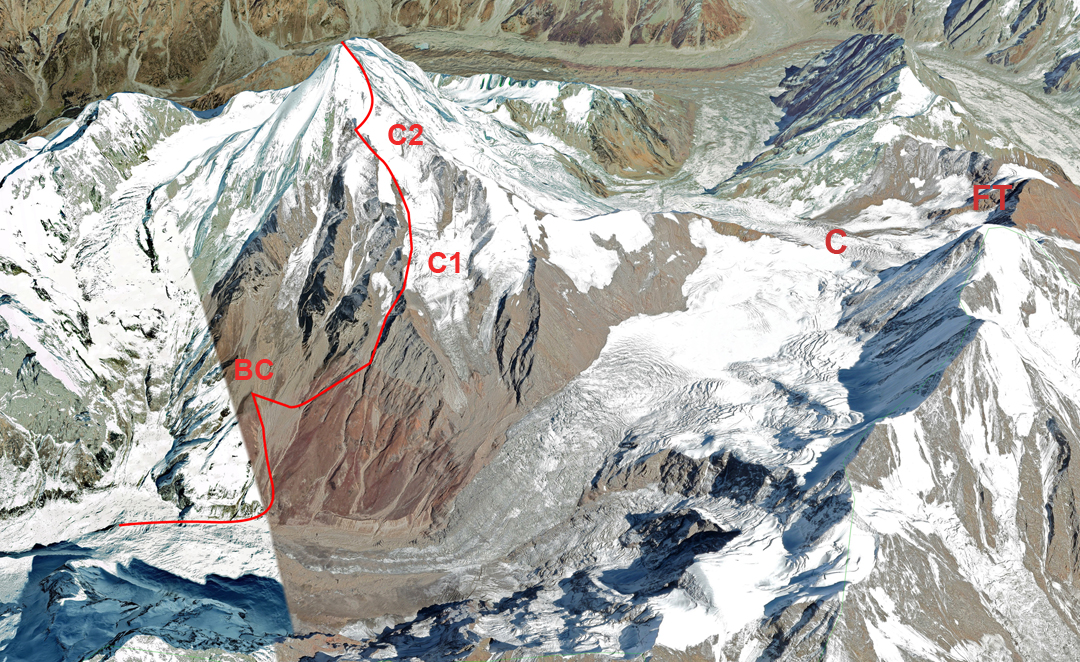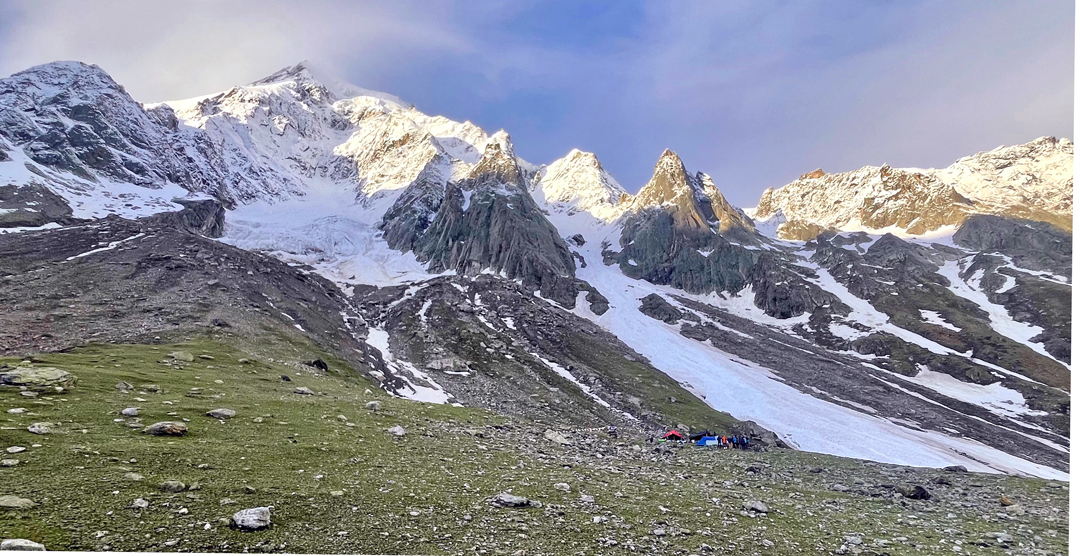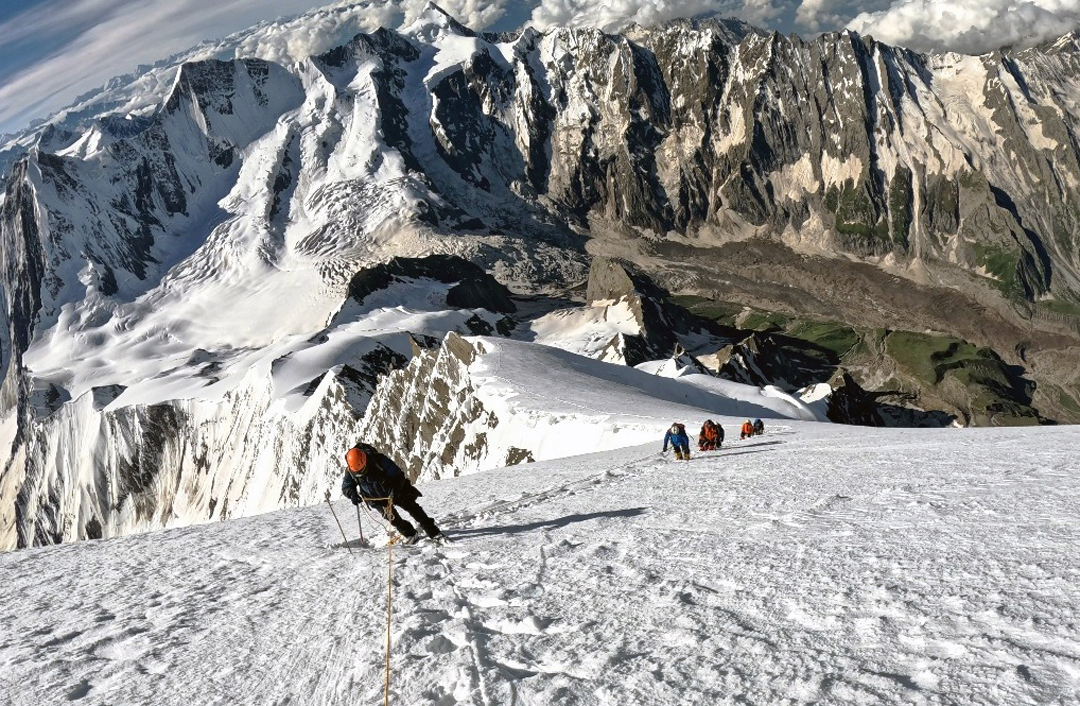Brammah I, South Face
India, Jammu and Kashmir, Kishtwar Himalaya
A team of 12 mountaineers from Kolkata, India, led by Rudra Prasad Halder, and six Sherpas led by Phursemba, made a probable new route on Brammah I (6,416m, 33°30’23”N, 76°03’04”E), climbing a couloir on the right side of the south face to reach the upper southeast ridge.

After a strong attempt in 1972 by a British party, which reached a point around 100m below the top on the southeast ridge, this elegant pyramidal peak was first climbed the following year by Chris Bonington and Nick Estcourt, via the same ridge. They ascended the Kibar Glacier, then through an icefall to the col at the base of the 1,050m ridge, and then followed the crest throughout, overcoming pitches of crumbly granite up to UIAA V.
The southeast ridge was repeated in 1978 by another British team, approaching the col from the other side; tragically, two members of this team were killed. In 1980, a French team almost climbed the north-northeast ridge. It appears there has been no ascent of this mountain for many years, partially due to access being very tricky after the late 1980s because of Kashmir’s political turbulence.
The Indian expedition arrived at their 4,150m base camp in the Kibar Nullah (valley) on June 6. As an aside, to reach this point they had to pass by a spiritual lake called Brammah Sarovar, where they were told that taking chicken or the 420 eggs that they carried any farther was banned due to religious reasons.
On June 9, some team members left base camp to open the route to Camp 1 (4,950m). Thereafter, with the Sherpa climbers in the lead, the expedition fixed 4,000m of rope up a couloir toward the right side of the south face, negotiating sometimes steep and interesting climbing, including a difficult rock wall in the gully below Camp 1. They exited the face above the difficulties on the southeast ridge, making their new line possibly an easier proposition than the first ascent route.
A summit attempt on the 16th stopped less than 150m below the top due to an accident involving one of the Sherpas. A second attempt shortly after was successful, with 14 members, including the leader and five Sherpas, reaching the top. The team discovered an old, bleached fixed rope shortly before the summit.
—Lindsay Griffin, AAJ




